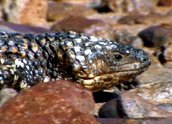

Nature of Australia – The Sunburnt Country (1989)
Synopsis
This episode from Nature of Australia describes Australia’s arid centre, sometimes called the 'dead heart’ or the 'back of beyond’ or even the 'never never’. The desert teems with animal life that survives the harsh conditions because moisture remains beneath the dried-out riverbeds. Once or twice a century there’s a flood in the channel country and the desert blooms once more.
Curator’s notes
At the time this series was made, few Australians really knew about the flora and fauna of their own country. The program makers felt they were showing Australia to Australians for the first time. Australia’s best known and talented natural history producer, David Parer, aided by his wife Elizabeth Parer-Cook and a host of other specialist camera operators, reveal the intimate details of the life cycle of the desert. Its normal state is parched, arid gibber country and salt lakes. Once or twice a century, huge cyclonic rains far away to the north of the continent run off into the great inland sea of Lake Eyre, which suddenly teems with a massive resurgence of wildlife, reproducing frantically. Then comes the inevitable drying up of the water and a slow and painful death, until there’s only the few creatures surviving that have adapted to the desert.
This remarkable series was conceived as a bicentennial project, coproduced with money from the BBC and the Australian Heritage Commission, and broadcast in 1988, the bicentennial year. The series was years in the making and was the most expensive natural history series the ABC had ever made, although it has since made its money back many times over, spawning another 19 programs from the off-cuts of the original series.
- Overview
- Curator’s notes
- Video 2 clips

- Principal credits
- Find a copy
- Make a comment
- Map
- Add your review



